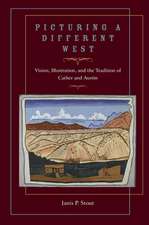Tennessee Frontiers – Three Regions in Transition
Autor John R. Fingeren Limba Engleză Hardback – 12 noi 2001
Two major themes emerge in the book: "access to opportunity," the belief of frontier people that North America offered unique opportunities for social and economic advancement; and the continuing tension between local autonomy and central authority, marked by the resistance of frontier people to the imposition of outside controls, even as they expected government to provide such assistance as acquiring land from Indians or foreign nations, providing military protection, or constructing internal improvements. The cultural interaction between and among groups of whites and Indians is another persistent theme in the book. Distinctions of class and gender separated frontier elites from "lesser" whites, and the struggle for control divided the elites themselves. Similarly, native society was riddled by factional disputes over the proper course of action regarding relations with other tribes or with white. Though the Indians "lost" in fundamental ways, they proved resilient, adopting a variety of strategies that delayed those losses and enabled them to retain, in modified form, their own identity.
It is a fascinating story, well told by the author, who along the way introduces the famous names of Tennessees frontier history: Attakullakulla, Nancy Ward, Daniel Boone, John Sevier, Davy Crockett, Andrew Jackson, and John Ross, among others. They remind us that this is the story of real people dealing with real problems and possibilities in often difficult circumstances.
Preț: 275.96 lei
Nou
Puncte Express: 414
Preț estimativ în valută:
52.80€ • 55.14$ • 43.60£
52.80€ • 55.14$ • 43.60£
Carte disponibilă
Livrare economică 25 martie-08 aprilie
Preluare comenzi: 021 569.72.76
Specificații
ISBN-13: 9780253339850
ISBN-10: 0253339855
Pagini: 408
Ilustrații: 18 b&w photographs
Dimensiuni: 152 x 229 x 15 mm
Greutate: 0.74 kg
Editura: MH – Indiana University Press
ISBN-10: 0253339855
Pagini: 408
Ilustrații: 18 b&w photographs
Dimensiuni: 152 x 229 x 15 mm
Greutate: 0.74 kg
Editura: MH – Indiana University Press
Cuprins
Table of Contents:
Foreword by Walter Nugent and Malcolm Rohrbough
Introduction
1. Land, People, and Early Frontiers
2. Trade, Acculturation, and Empire: 1700-1775
3. The Revolutionary Frontier: 1775-1780
4. Expansion Amid Revolution: 1779-1783
5. Speculation, Turmoil, and Intrigue: 1780-1789
6. The Southwest Territory: 1790-1796
7. The Social Fabric
8. The Frontier Economy
9. Statehood to Nationalism: 1796-1815
10. The Western District: 1795-1840
11. Hegemony and Cherokee Removal: 1791-1840
Conclusion
Essay on Sources
Index
Foreword by Walter Nugent and Malcolm Rohrbough
Introduction
1. Land, People, and Early Frontiers
2. Trade, Acculturation, and Empire: 1700-1775
3. The Revolutionary Frontier: 1775-1780
4. Expansion Amid Revolution: 1779-1783
5. Speculation, Turmoil, and Intrigue: 1780-1789
6. The Southwest Territory: 1790-1796
7. The Social Fabric
8. The Frontier Economy
9. Statehood to Nationalism: 1796-1815
10. The Western District: 1795-1840
11. Hegemony and Cherokee Removal: 1791-1840
Conclusion
Essay on Sources
Index
Recenzii
Finger (Univ. of Tennessee-Knoxville) draws on his rich research into the Southern frontier to illuminate not only Tennessee's three physiographic zones but also their spheres of interaction. Inhabited by Native peoples for some ten thousand years, Tennessee was touched by the 16th-century Desoto entrada; became a cockpit of war during the imperial struggles among French, English, and Spanish for hegemony in North America; and was born in the fires of the American Revolution. The author skillfully summarizes and illustrates the complexity of Tennessee's frontier history, addressing issues of leadership (Jackson versus all rivals), land speculation (ever dominant), and Indian affairs (where he is at his best). Although a frontier until 1840, Tennessee was part of a global economic and diplomatic network from its earliest days. Like the late Stanley Folmsbee, Finger knows the three Tennessees, linguistically, geographically, politically, socially, and economically; fortunately for the reader, he has constructed a well-balanced account of them all. Maps, charts, illustrations, and 48 pages of sources enhance the volume's usefulness for collections on the American frontier. All levels and collections.J. H. O'Donnell III, Marietta College, 2002jul CHOICE.--J. H. O'Donnell III, Marietta College, 2002jul CHOICE.
Notă biografică
Descriere
An important new history of the frontier years of the Volunteer State











